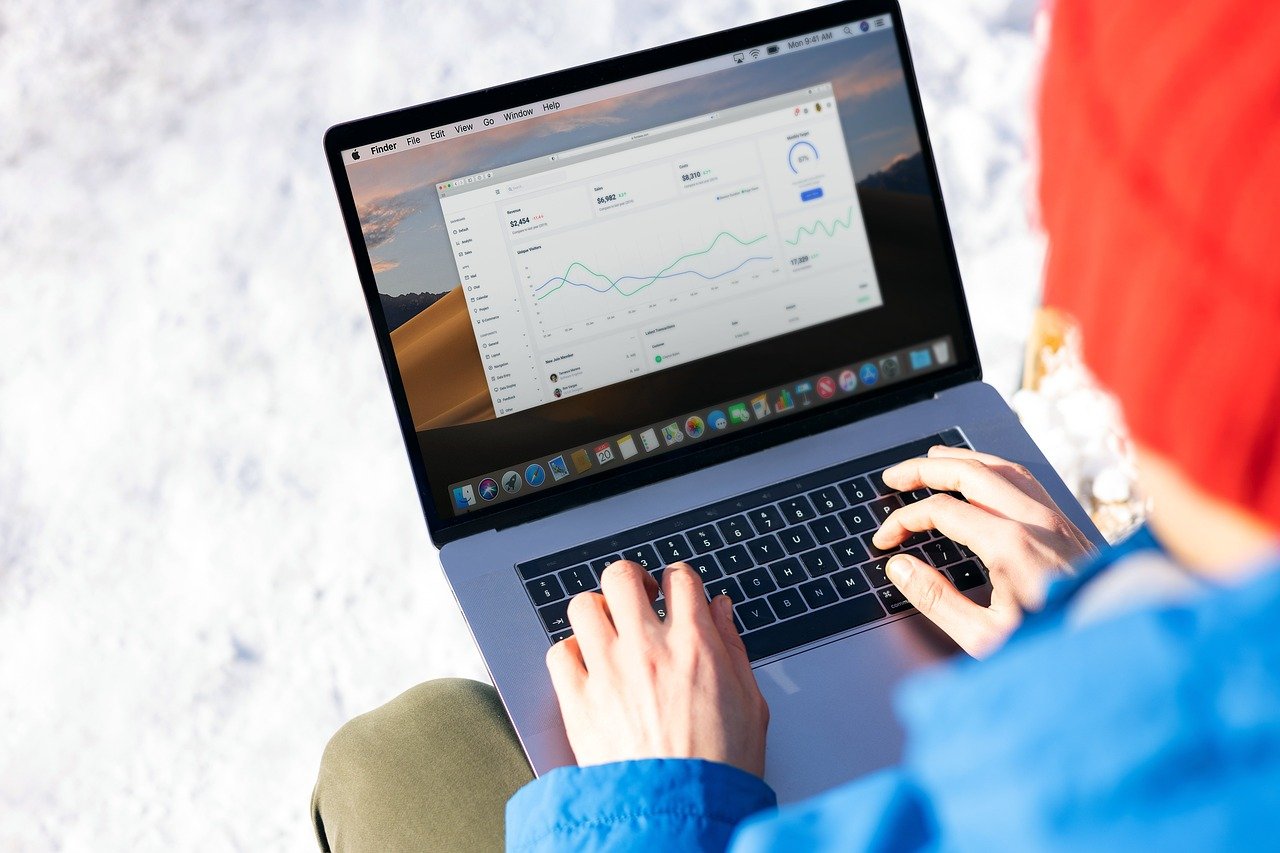App development has revolutionized how we interact with technology, consume information, and conduct business. Whether it’s streamlining daily tasks, accessing entertainment, or connecting with others globally, mobile applications have become integral to modern life. This blog post delves into the multifaceted world of app development, exploring the key phases, technologies, and strategies involved in creating successful and engaging mobile experiences.
The App Development Lifecycle: From Idea to Launch
Conceptualization and Planning
Every great app starts with a brilliant idea. But an idea alone isn’t enough. Rigorous planning is crucial to ensure the app meets a real need and has a clear purpose. This phase involves:
- Market Research: Identifying the target audience, analyzing competitors, and understanding market trends. For example, if you’re developing a fitness app, research existing apps like MyFitnessPal or Fitbit to see what works and where there’s room for improvement.
- Defining the App’s Purpose: Clearly stating the app’s main function and the problem it solves. Is it a productivity tool, a social platform, or a game?
- Feature Prioritization: Listing all potential features and prioritizing them based on their importance and feasibility. Use a MoSCoW (Must have, Should have, Could have, Won’t have) prioritization matrix to help.
- Creating User Personas: Developing fictional representations of your ideal users, including their demographics, needs, and goals. This helps guide design and development decisions.
- Budgeting and Timeline: Establishing a realistic budget and timeline for the entire development process. Factor in costs for design, development, testing, and marketing.
- Choosing a Development Approach: Decide whether to develop natively (using platform-specific languages like Swift for iOS and Kotlin for Android), cross-platform (using frameworks like React Native or Flutter), or a hybrid approach.
Design and Prototyping
The design phase is where the app’s visual identity and user experience (UX) take shape. It’s essential to create an intuitive and engaging interface that users will enjoy.
- User Interface (UI) Design: Creating the visual elements of the app, including color schemes, typography, and button styles. Tools like Figma and Adobe XD are commonly used.
- User Experience (UX) Design: Focusing on the overall user experience, including navigation, information architecture, and user flows. UX designers create wireframes and mockups to visualize the app’s structure and functionality.
Example: Consider the UX of an e-commerce app. A well-designed app would make it easy for users to browse products, add items to their cart, and complete the checkout process.
- Prototyping: Creating interactive prototypes to test the app’s functionality and usability. Prototypes can range from low-fidelity paper prototypes to high-fidelity digital prototypes.
Benefits of prototyping:
Identify potential usability issues early on
Gather feedback from users
Refine the app’s design before development begins
App Development: Coding and Implementation
This is where the actual coding takes place, translating the design into a functional application. This phase requires skilled developers who are proficient in the chosen programming languages and development frameworks.
- Backend Development: Building the server-side infrastructure that supports the app, including databases, APIs, and authentication systems. Popular backend technologies include Node.js, Python (with Django or Flask), and Ruby on Rails.
- Frontend Development: Creating the user interface that users interact with. This typically involves using languages like Swift (for iOS), Kotlin (for Android), JavaScript (for web and cross-platform apps), and frameworks like React Native or Flutter.
- API Integration: Connecting the app to external services and data sources through APIs. For example, integrating with a payment gateway like Stripe or a mapping service like Google Maps.
- Version Control: Using version control systems like Git to track changes to the code and collaborate with other developers.
- Agile Development Methodologies: Implementing agile practices such as daily stand-ups, sprints, and retrospectives can improve efficiency and collaboration during development.
Testing and Quality Assurance (QA)
Rigorous testing is essential to identify and fix bugs, ensure the app’s stability, and optimize its performance.
- Unit Testing: Testing individual components of the app to ensure they function correctly.
- Integration Testing: Testing how different components of the app work together.
- User Acceptance Testing (UAT): Allowing real users to test the app and provide feedback.
- Performance Testing: Evaluating the app’s speed, responsiveness, and stability under different conditions.
- Security Testing: Identifying and addressing potential security vulnerabilities.
- Automation Testing: Using automated tools to run repetitive tests and ensure code quality. Example: Selenium, Appium.
- Beta Testing: Releasing a beta version of the app to a limited number of users for real-world testing before the official launch.
Deployment and Launch
Once the app has been thoroughly tested and refined, it’s time to deploy it to the app stores.
- App Store Optimization (ASO): Optimizing the app’s listing in the app stores to improve its visibility and attract more downloads. This includes using relevant keywords, writing compelling descriptions, and showcasing high-quality screenshots.
Tips for ASO:
Research relevant keywords using tools like Sensor Tower or App Annie.
Craft a concise and engaging app description that highlights the app’s key features and benefits.
Use visually appealing screenshots and videos to showcase the app’s functionality.
- App Store Submission: Submitting the app to the Apple App Store (for iOS apps) or Google Play Store (for Android apps). This involves following the app store’s guidelines and providing all required information.
- Release Strategy: Planning a launch strategy that includes marketing, public relations, and user support.
- Monitoring and Analytics: Tracking app downloads, usage, and user feedback to identify areas for improvement. Tools like Google Analytics for Firebase and AppFigures provide valuable insights.
Choosing the Right App Development Approach
Native App Development
- Description: Native apps are built specifically for a single platform (iOS or Android) using platform-specific languages and tools.
- Pros:
Optimal performance and user experience
Access to all device features and APIs
Greater security and reliability
- Cons:
Higher development costs
Requires separate codebases for iOS and Android
Longer development time
Cross-Platform App Development
- Description: Cross-platform apps are built using frameworks that allow developers to write code once and deploy it to multiple platforms.
- Pros:
Lower development costs
Faster development time
Code reusability
- Cons:
Potentially lower performance compared to native apps
Limited access to some device features
Can have compatibility issues across different platforms
Hybrid App Development
- Description: Hybrid apps are essentially web apps wrapped in a native container. They are built using web technologies like HTML, CSS, and JavaScript.
- Pros:
Faster development time than native apps
Cross-platform compatibility
Access to device features through plugins
- Cons:
Performance can be lower than native apps
Dependence on plugins for native functionality
Can feel less “native” to the user
- Example: If you are building a high-performance game, native development is preferable. If you are building a simple utility app and need to get to market quickly, cross-platform development might be a better option.
Essential Technologies and Tools for App Development
Programming Languages
- Swift (iOS): Apple’s modern programming language for developing iOS, macOS, watchOS, and tvOS apps.
- Kotlin (Android): Google’s preferred programming language for Android app development.
- Java (Android): A widely used language for Android development, though increasingly being replaced by Kotlin.
- JavaScript: Used for web development, cross-platform development (React Native, Ionic), and backend development (Node.js).
Frameworks and Libraries
- React Native: A popular JavaScript framework for building cross-platform mobile apps.
- Flutter: Google’s UI toolkit for building natively compiled applications for mobile, web, and desktop from a single codebase.
- Xamarin: A Microsoft framework for building cross-platform apps with C#.
- Ionic: An open-source framework for building hybrid mobile apps using web technologies.
Development Environments
- Xcode (iOS): Apple’s integrated development environment (IDE) for developing iOS and macOS apps.
- Android Studio (Android): Google’s official IDE for Android app development.
- Visual Studio Code: A lightweight and versatile code editor with excellent support for various programming languages and frameworks.
Backend Technologies
- Node.js: A JavaScript runtime environment for building scalable network applications.
- Python (Django/Flask): Powerful frameworks for building robust backend systems.
- Ruby on Rails: A web application framework written in Ruby.
- Firebase: A Google-backed platform for building web and mobile apps, offering a wide range of services including authentication, database, and hosting.
- AWS (Amazon Web Services): A comprehensive cloud computing platform offering a wide range of services for building and deploying applications.
Best Practices for Successful App Development
Prioritize User Experience (UX)
- Conduct User Research: Understand your target audience’s needs and preferences.
- Create Intuitive Navigation: Make it easy for users to find what they’re looking for.
- Optimize for Mobile Devices: Ensure the app looks and functions well on different screen sizes and resolutions.
- Provide Clear Feedback: Let users know when an action has been completed or if an error has occurred.
Implement a Robust Testing Strategy
- Start Testing Early: Begin testing as soon as possible in the development process.
- Use a Variety of Testing Methods: Employ unit testing, integration testing, user acceptance testing, and performance testing.
- Automate Testing: Automate repetitive tests to improve efficiency and code quality.
- Get User Feedback: Involve real users in the testing process to gather valuable feedback.
Focus on Security
- Protect User Data: Implement strong security measures to protect user data from unauthorized access.
- Use Secure Communication Protocols: Use HTTPS to encrypt data transmitted between the app and the server.
- Regularly Update Dependencies: Keep all dependencies up to date to patch security vulnerabilities.
- Conduct Security Audits: Perform regular security audits to identify and address potential vulnerabilities.
Optimize for Performance
- Minimize Resource Usage: Reduce the app’s memory footprint and CPU usage.
- Optimize Images and Videos: Compress images and videos to reduce file sizes.
- Use Caching: Cache frequently accessed data to improve performance.
- Monitor Performance: Use performance monitoring tools to identify and address performance bottlenecks.
Conclusion
App development is a complex but rewarding process that can transform ideas into powerful tools and engaging experiences. By understanding the app development lifecycle, choosing the right technologies, and following best practices, you can create successful mobile applications that meet user needs and achieve your business goals. Whether you’re building a simple utility app or a complex enterprise solution, a strategic and user-centric approach is key to success in the ever-evolving world of app development.



